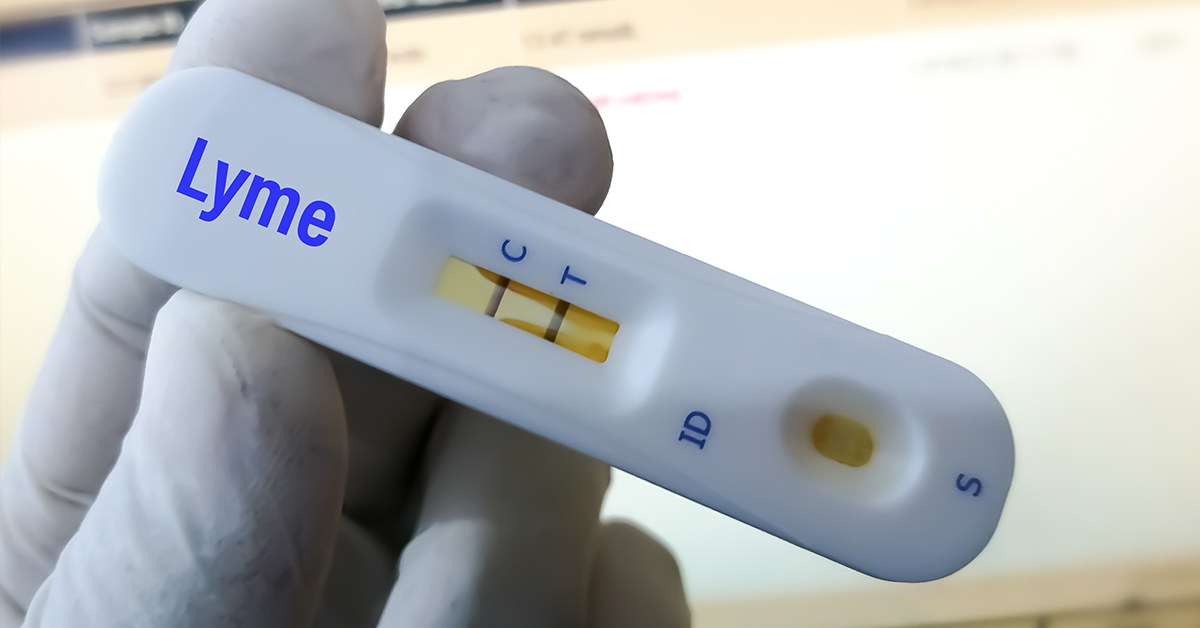Diagnosing Lyme disease can be frustrating for medical professionals and patients alike. Testing is notoriously unreliable, and both false negative and false positive results abound.
Meanwhile, some cases of Lyme disease have seemingly clear early signs while others may have no symptoms at all until much later. All of which make prompt diagnosis and treatment that much harder. With imperfect testing and symptoms similar to so many other illnesses, how likely is it that a Lyme test result will be accurate?
How Accurate Is the Lyme Disease Test?
Lyme disease antibody tests produce false negative results at least 20-30 percent of the time, with some studies indicating that number is even higher. Because tests only look for an immune response to the bacteria that causes Lyme – and not for the bacteria itself – there are several reasons why Lyme may be missed. It’s possible the test was performed too early after exposure, and antibodies haven’t developed yet.
Because Lyme disease suppresses the immune system, it’s also possible that the individual isn’t mounting a measurable immune response. Finally, there are strains of Lyme disease that current tests don’t even measure.
What Causes a False Positive for Lyme Disease?
False positives happen frequently as well and are more likely to occur in patients with autoimmune diseases (like rheumatoid arthritis or Lupus) or in those with spirochetal illnesses (such as mononucleosis or syphilis). Even periodontal disease can cause a false positive. If you had Lyme disease in the past and recovered, you may have false positives on subsequent tests.
What Is the Most Accurate Test for Lyme Disease?
Lyme testing consists of an ELISA serological (blood) test to look for Lyme antibodies, possibly with a follow-up western blot test to confirm the diagnosis. At this time, these tests – coupled with analysis of symptoms – are the only way Lyme disease is diagnosed.
What Else Mimics Lyme Disease?
Lyme disease often is accompanied by a bullseye rash at the location of the bite. While this rash is fairly distinctive, there are other conditions that look similar. These include ringworm, bug bite allergy, injection drug reactions, hives, and cellulitis.
The flu-like symptoms of Lyme disease are similar to so many other illnesses and they may be initially dismissed or ignored. As Lyme progresses and spreads, it may be mistaken for other diseases and conditions like borrelia miyamotoi (another tick-borne illness), arthritis (particularly juvenile idiopathic arthritis), fibromyalgia, myalgic encephalomyelitis/chronic fatigue syndrome, or multiple sclerosis.
Early treatment is crucial to prevent long-term complications from Lyme disease. Because there is so much uncertainty in diagnosing it, doctors tend to err on the side of caution and prescribe antibiotics… even where symptoms and test results are unclear. This isn’t without risk, and overuse of antibiotics is decreasing their efficacy over time. This is why we believe that it’s so necessary to protect yourself and your family from exposure to ticks in the first place.
East End Tick & Mosquito Control® – Eliminating Tick Threats for Over 25 Years
Because Lyme disease can be debilitating and difficult to diagnose, it’s important to protect yourself and your family from tick-borne illnesses year-round. East End Tick & Mosquito Control® has more than 25 years of eliminating tick threats on Long Island properties like yours. Contact us online for a free estimate or call us at (631) 324-9700 in East Hampton, (631) 287-9700 in Southampton, or (631) 765-9700 in Southold.


